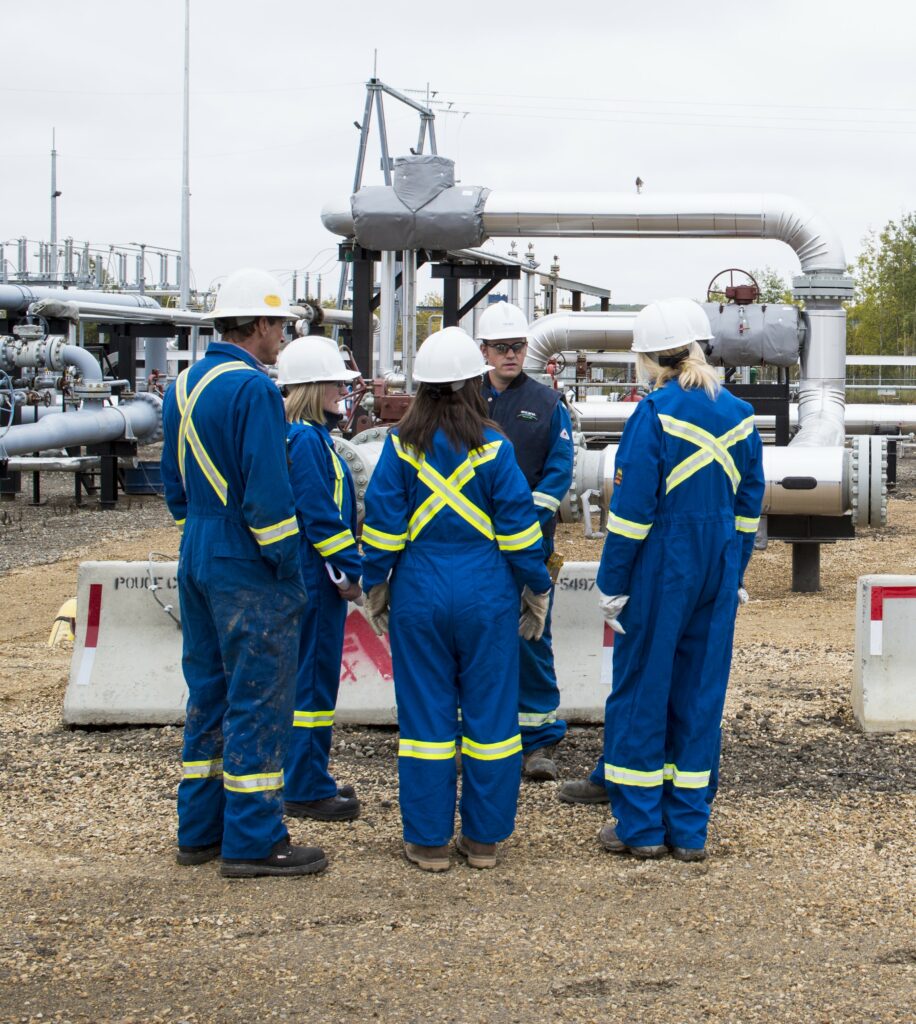Flaring and venting involve the release of gases including carbon dioxide and methane into the atmosphere. These releases may be necessary as part of safe operations. Strict provincial and federal standards regulate flaring and venting, resulting in reduced greenhouse gas (GHG) emissions from upstream production.
Flaring
Flaring is the controlled burning of waste gases from oil and natural gas operations, resulting in the release of GHGs such as carbon dioxide (CO2), methane, and other compounds including nitrogen dioxide. There are three primary types of flaring:
- Emergency flaring – unplanned, short-duration releases.
- Process flaring – intermittent releases that may last for a few hours or a few days, such as during well testing to assess the flow rates of a reservoir or at a facility during planned maintenance.
- Production flaring – may occur continuously at a well as the resource is being produced. Flaring may occur because natural gas produced along with oil is present in volumes too small to capture for processing and sale. Production flaring is continuous and intermittent.

Venting
Venting is a controlled release of unburned gases into the atmosphere, such as natural gas or other hydrocarbon vapours, water vapour, or other gases. Venting may occur during several processes including well completion, during maintenance, or in emergency situations. Operators seek to limit venting by combusting or conserving natural gas where possible.
Flaring and venting can occur during operations such as:
- Drilling
- Well completion or well servicing
- Natural gas well testing to estimate reserves and determine productivity
- Planned maintenance of processing equipment and pipelines
- Unplanned depressuring of process equipment and pipelines due to process upsets or emergencies.
Canada’s oil and natural gas industry is actively reducing emissions from flaring and venting, through many technologies and innovations by individual companies and through industry-wide research and collaborations. Results indicate the industry is making progress to identify and reduce or eliminate venting and flaring. For example, natural gas that is produced along with crude oil (called solution gas because it’s dissolved in the oil) is often present in volumes too small to be economical to separate and sell. Instead, solution gas was often vented directly to the atmosphere. Gas conservation is the recovery of solution gas to use as fuel for production facilities, to sell, to inject for enhanced recovery, or to generate power, among other uses. Producers have improved gas conservation performance. In 2022, more than 97% of the solution gas from crude oil and crude bitumen production was conserved. (Source: Alberta Energy Regulator report ST60b, 2023)
Production from Canada’s offshore operations are among the world’s lowest carbon-intensive oil, emitting significantly lower GHG emissions than other oil-producing jurisdictions. (Source: NL Oil and Gas Industry Council 2021.) Supporting Canada’s offshore industry is a way to ensure that some of the lowest emissions production can continue to be part of the global energy mix. Offshore operators have reduced flaring significantly through the Global Gas Flaring Reduction Partnership. (Source: Environment and Climate Change Canada, Canada-Newfoundland and Labrador Offshore Petroleum Board)
How we are innovating
Canada’s oil and natural gas producers are implementing innovative solutions to minimize their impact on the planet, while continuing to produce the energy we all rely on.
